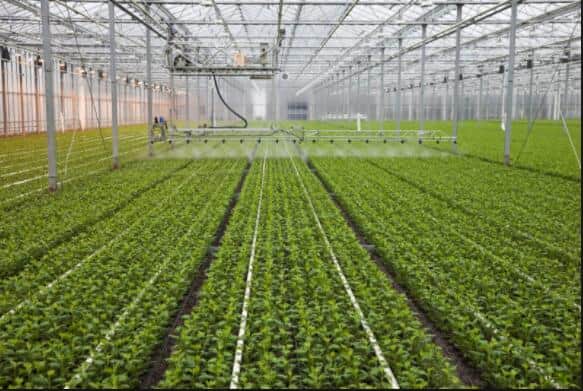
Smart farming, an extension of precision agriculture, can increase total yield by up to 5% and total profits by up to 20%.
In precision agriculture, “Internet of Things” devices, global positioning and new technologies are used. Their job is to measure and respond.
With this, we might be able to tackle the challenges of the future in enhancing how we produce and manage food.
As the global population is set out to increase, the total food requirements are likely to follow. The growth estimate for farming lies at 70% by 2050.
The main drivers are the population growth and the rise of average calorie intake. The increase of average calorie consumption lies at 10% (2010–2050).
Fewer Experts
A big challenge for the agriculture industry these days is the low profitability and industry attractiveness. This causes a shrinking number of experts, on whom the traditional agriculture depends on.
Low Efficiency
The cultivation of grains and vegetables suffer from inefficiencies in farming. One of the main causes is a of information and predictability. This leads to a loss of product, waste in irrigation, fertilizing, and pest control. With fewer experts in the field, results become more reliant on the skills. The environmental impact caused by the use of consumables and resources to be considered and minimized.
The keeping of livestock aims to realize yields in milk, wool, eggs, and meat. Specific challenges are the overview of livestock health. Otherwise, the spreading of diseases and lower fertility are possible results. Also, the strain on livestock needs to minimized for best yield and low mortality.
High Yield Risk
A general risk are the long periods between seed and harvest or birth and slaughter. During this time price fluctuations for the product are likely to occur. With the resulting uncertainty the future payout and profit is subject to risk.
If, at the time of sale, the price for cattle is lower than expected, the farmer is subject to a lower margin. The planning accuracy suffers from incomplete information and uncertainty.
Solutions
Farming accuracy is the result of the use of connected devices and new technologies. Benefits include:
Enhanced efficiency
Optimized yield
Higher planning accuracy
This leaves a higher profitability for agriculture, increases industry attractiveness, and provides tools to better handle future challenges.Grains, Fruit & Vegetables
Scouting
Scouting of land is an important factor in success in agriculture. For example, farmers need to think about how to position crops, how to rotate, when to seed and harvest. During growing season, scouting helps to coordinate fertilizing, irrigation, weed and pest control.
Data Sources
Satellite, plane or drone-based imaging technologies use visual scanning: Satellite imaging gives an image resolution of 0.5–10m. Drones, or “RPAS” (remotely piloted aerial systems) deliver up to 2–10cm image resolution.
The cameras deliver imaging in thermal, infrared and visible spectrum. Steve blank’s post about practical use of hyper spectral cameras and customer value is a great example.
A high scanning speed of up to 1000 acres/h makes RPAS suitable for large scale agriculture. They can gather data on moisture level, weeds and chlorophyll content in plants.
In-ground sensors can be installed at fixed locations or they can be attached to vehicles. Typical vehicles include smart tractors or “agri-bots” (ground based unmanned vehicles). Soil sensors can detect electrical conductivity, moisture, radiometric, and pH data. Fixed sensor installations can also include acoustic technology to monitor for larger pests.
The data pool can include more data sources such weather forecasts and climate data. An added benefit can come from interlinking data pools, for example, between neighbouring farms and with farming equipment providers.
Seeding
During seeding, the effectiveness of seeds can be enhanced with precise placement. The necessary field and soil analytics and can come from autonomous or guided agri-bots.
Cultivation
During cultivation, lower manual labour effort can come from remote controlled and automated equipment. Modern farm equipment can also feature maintenance prediction to reduce the inspection effort.
An excellent fuel economy comes from guided tractors that are able to choose the most efficient routing. Also, the field monitoring ensures that tractors are only deployed when needed. With these techniques, one tractor manufacturer reported a decrease of 40% fuel consumption.
The reduction of water, pesticides and fertilizer consumption has an immediate impact. First, on the profitability, and second, on the environmental strain. Information about moisture level and weather predictions by zones are gathered.